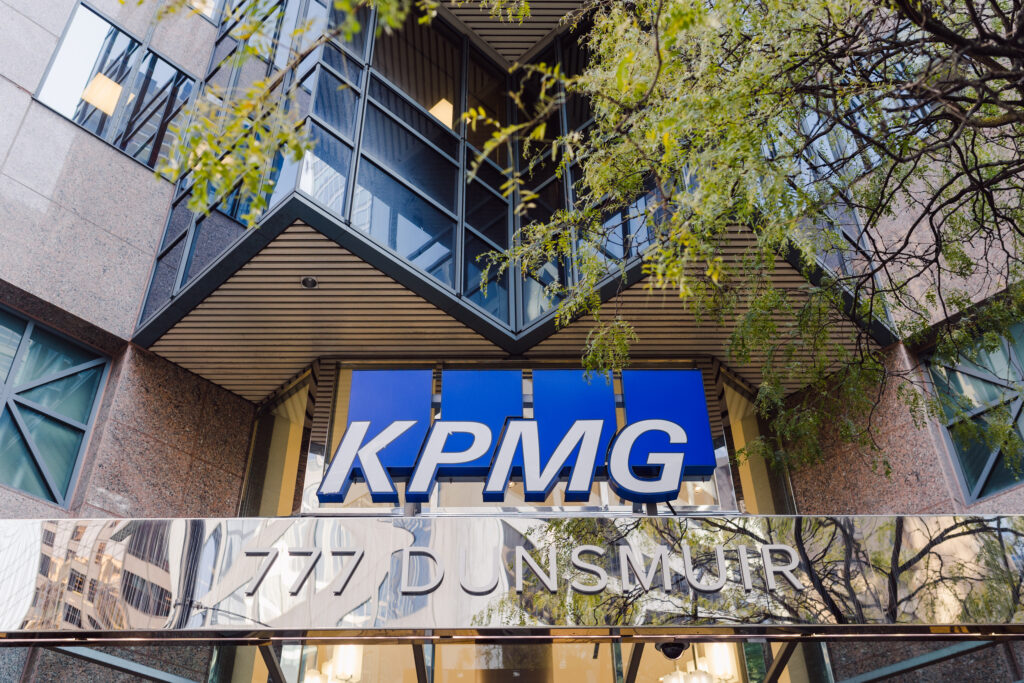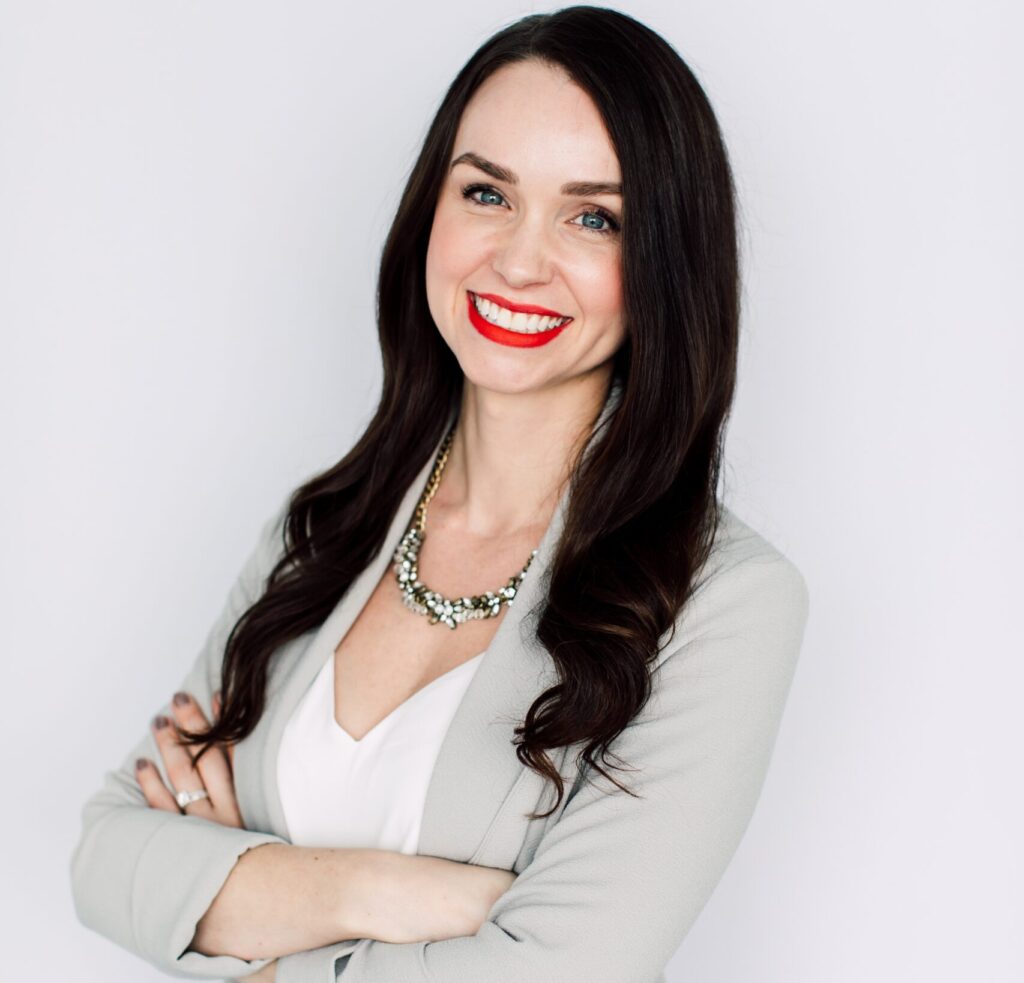

Features
Diversity & Inclusion
KPMG launches disability inclusion action plan, targets 6% workforce representation by 2025
February 23, 2024
By
Todd Humber
 Photo: Courtesy KPMG
Photo: Courtesy KPMG “Representation really matters.” That’s how Stephanie Braid, director of inclusion, diversity, and equity at KPMG Canada, summed up why it’s so important for organizations to proactively and purposefully adopt tactics that attract workers with disabilities.
The company recently unveiled its first multi-year Disability Inclusion Action Plan with a dual-purpose strategy — speeding up progress on disability inclusion and encouraging other organizations to follow suit. It features a solid commitment and a tangible target: By 2025, it wants six per cent of its employees to be people with disabilities.
“We’re a client service organization. We want to reflect the clients that we serve in the communities, that we work with,” she said. “People want to be able to see role models that they can look up to and be inspired by.”
Braid pointed out that, according to Statistics Canada, 27 per cent of Canadians aged 15 or over self-identify as having one or more disabilities. So it set about putting together a plan to “kind of take stock of where we are” and increase representation, she said.
“For us, we created this plan really for two key reasons,” said Braid. “The first one is simply to build on and accelerate our progress. The second piece, which is important to me and to our firm is, by releasing it publicly, we want to inspire others.”
Rob Davis, the chief inclusion, diversity and equity officer at KPMG in Canada, said the reality is that people with disabilities face numerous barriers — including physical, cultural, and attitudinal ones — in the workplace.
“We need to break these down so that we can attract and engage the talents and passions of people with disabilities to ensure we have the best solutions to address Canada’s economic, environmental, and social challenges,” he said.
Journey to inclusivity
KPMG’s journey toward a more inclusive environment began long before the conception of its latest plan. Since the introduction of its IDEA (inclusion, diversity, equity and access) strategy in 2014, the firm has been proactive in integrating people with disabilities into its workforce.
This has included the establishment of employee resource groups dedicated to disability inclusion and support for families of children with exceptionalities. Braid emphasized the critical importance of these groups in shaping the firm’s direction on inclusion.
“We’ve really been working with for years to understand their experiences and educate our people and implement new programs and new supports,” she said.
The transparency of KPMG’s plan is a deliberate choice, designed to encourage other companies to adopt similar strategies. Braid is adamant that diversity, equity, and inclusion should not be areas of competition among firms.
“One of my favorite parts of being at KPMG… is when I get to speak with other people in corporate Canada, learn about what they’re doing, we can share what we’re doing and also partner with other external organizations that are advancing disability inclusion,” she said.
Consultation with stakeholders
Consultation has been a cornerstone of the plan’s development, with KPMG engaging a wide range of stakeholders — both internal and external — to ensure the initiative is both comprehensive and reflective of the needs of employees with disabilities.
“Over the years, we built really incredible deep, trusted relationships with fantastic organizations that are really focused on advancing disability inclusion,” said Braid.
That includes organizations like Specialisterne Canada, which KPMG has been working with in the areas of neurodivergent hiring and education. It also worked with the Rick Hansen Foundation to create more inclusive office spaces, she said.
It also partnered with the Canadian National Institute for the Blind on a scholarship and internship program to “hire talent that is blind or partially sighted,” she said.
These organizations have been “instrumental in the whole journey. They teach us so much, they bring so much expertise and knowledge and mythbusting to the work we do,” said Braid.
“We really had not just the perspective of our people, which is super important,” she said. “But we also said, ‘Hey, how can we part of this broader ecosystem and leverage the relationships we have in the community.'”
On the internal side, KPMG was “intentional” about keeping everyone in the loop throughout the process and not just springing the plan on them when it was fully baked, she said. That included working closely with HR, IT, and the real estate teams, among others. The goal was to ensure that all aspects — from the physical office to the technology to recruitment — were taken into account.
“I think really engaging them early and often throughout the plan, so that their voice was in there too, was super important,” said Braid. It gives her confidence that, moving forward, things will click because they were part of the journey and they’re “really excited and energized” about the change.
The role of allyship
Another pillar of the program is education and allyship, she said.
“Certainly, when we look at how we’re going to get disability inclusion, it’s not on people with disabilities at our firm,” said Braid. “We have more people that have identified that they don’t have a disability. So that role of allies in terms of challenging a lot of myths and stereotypes… there’s a lot of misinformation.”
KPMG Canada has put a lot of effort around education, and that is going to continue, she said. That’s important to ensure employees don’t face barriers on a day-to-day basis in their interactions.
“That’s how we’re really going to create the change that we want to see,” she said.
A personal story
KPMG’s Rafay Khan, who leads the firm’s Disability Inclusion Network, and several other network members recently shared their personal experiences as a person with a disability on a firmwide education session.
“My disability informs who I am and what I am passionate about,” said Khan, who survived a cerebral hemorrhage from which he was told he might never walk again. “I hope to empower other persons with disabilities to feel comfortable disclosing their disability at work and get the support that they need.”
A Chartered Professional Accountant (CPA), Khan recently received his Chartered Financial Analysis (CFA) designation and ran the distance in a full 42.2-kilometre marathon, achieving two of his major goals this past year.
“I credit my recovery from paralysis in having helped me build endurance to pursue my career and studies. In terms of mobility, I’ve also built endurance one step at a time by taking a few small steps to loving running, which I always hated before the hemorrhage. I started to enjoy each step of the run as an act of defiance,” he said. “I think most people that I’ve worked with at KPMG and clients don’t even know I have a disability unless they see my non-dominant hand.”
Khan credits the Special Family and Friends Network, which aims to provide a supportive environment for caregivers of children with exceptionalities, for their support and connecting him with other employees with a disability when he joined KPMG.
A year later, in 2020, he was one of the founding members of the Disability Inclusion Network, which provides a forum for employees with disabilities to connect, be voices for change, and raise awareness of workplace issues that affect people with disabilities to create more accessible and inclusive practices.
To view KPMG Canada’s plan, visit https://kpmg.com/ca/en/home/about/inclusion-diversity-equity.html.
Print this page
